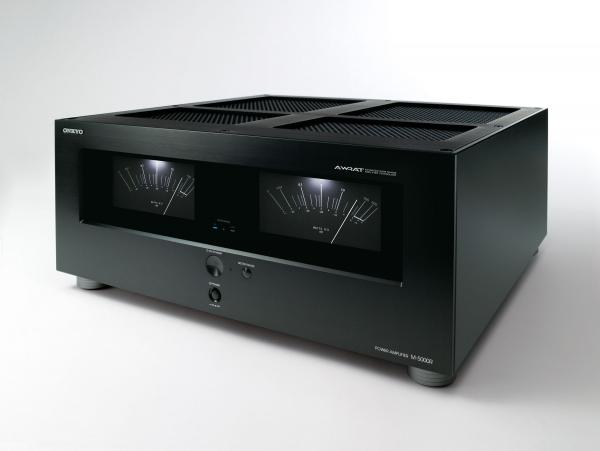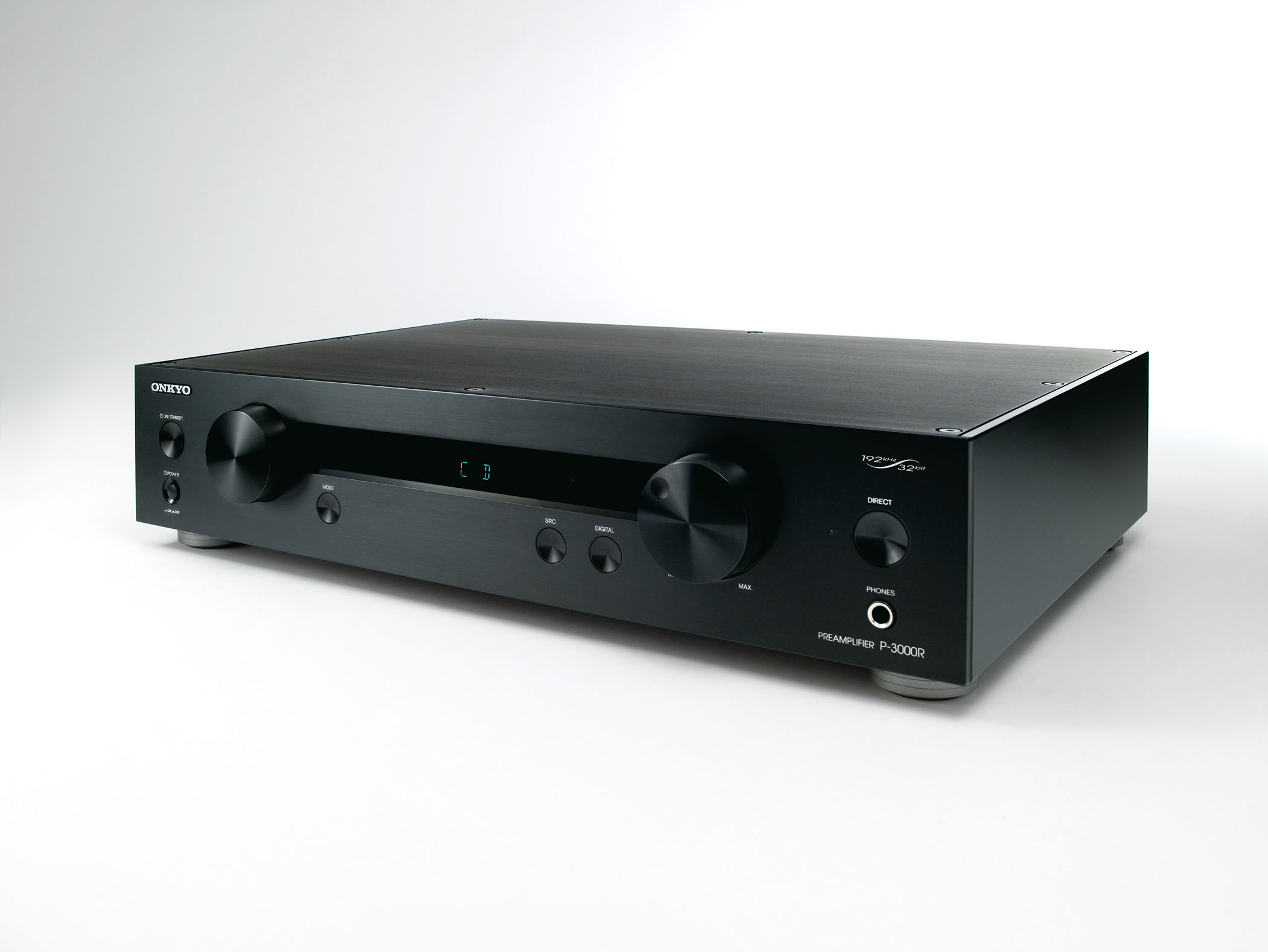A major blast from the 70's I had a mitisobushi that looked like this ones brother.
Test Report: Onkyo P-3000R preamp and M-5000R power amp

Key Features |
| $4,198 (as tested) us.onkyo.com |
| M-5000R power amp ($2,499) • 2 x 80 watts (8 ohms; 20Hz - 20kHz, 0.05% THD, 2 channels driven) • 12V trigger in/out • Auto standby switch • Inputs: Stereo RCA, mono XLR • 17 1/8 x 7 3/8 x 17 in; 51 3/4 lb |
| P-3000R preamp ($1,699) • Dual 192-kHz/32-bit Burr-Brown DACs • 12V trigger output • IR remote input • Inputs: (4) stereo analog; phono; (2) coaxial and (2) optical digital; AES/EBU; USB • Outputs: (2) stereo analog pre outs plus tape loop; optical digital • 17 1/8 x 3 7/8 x 13 1/8 in; 241/4 lb |
Anyone looking at the above picture who figures they accidentally clicked on a repost of some ancient test report from Stereo Review, your confusion is entirely understandable. Decades after the big Japanese audio companies all but abandoned two-channel high-end gear to sail off into the multi-channel A/V receiver waters, Onkyo has turned back the clock with a delightfully retro-looking stereo power amp and matching preamp.
Of the two units, it’s the M-5000R power amp that really flaunts its old-school roots. Those sexy power meters were a trend among the big Japanese audio manufacturers back in the 1970s, even though most Western high-end companies considered them kind of gimmicky. To be honest, the meters really don’t give you any information you couldn’t live without, but they sure do look cool bouncing up and down with the music.
With lightweight, powerful class D amps now becoming more popular in the home theater market, the M-5000R’s 52-pound bulk and relatively modest 80 watt-per-channel rating seem kind of like throwbacks, too. But that power rating is unashamedly conservative, reflecting the amp’s ability to deliver gobs of current into real speaker loads.
The P-3000R preamp is a bit more contemporary looking than its sibling. With its chunky volume knob and sleek, brushed-aluminum cabinet, you could probably fool a lot of audiophiles into guessing it came from a boutique high-end company by simply covering up the Onkyo badge. Scratch a little deeper and you’ll discover that the P-3000R is bang-up-to-date under its skin, with many of the features that today’s audiophiles look for. In addition to the usual complement of analog inputs (including phono), you get a bunch of digital inputs that feed the preamp’s dual 192-kHz/32-bit digital-to-analog converters. The coaxial and optical inputs are pretty standard stuff, but the P-3000R adds a professional AES/EBU input and, more interestingly, a USB port that lets you stream high-resolution files from your computer. For standard-rez files, the DAC can upsample the signal to either double or quadruple the original sampling rate. One feature that was notably missing is an iPod dock port, although I expect Onkyo’s response would be that the USB input offers a better way to access your iTunes library

SETUP
After years of configuring complex A/V receivers, setting up the Onkyo separates was a piece of cake for me. You simply connect analog and digital sources to the preamp, run a stereo interconnect between the preamp and power amp, and connect speaker cables from the amp to the speakers. Connecting a computer (PC only, alas), is a little more involved, as you first need to download and install a driver from the Onkyo website. As I write this, the required download isn’t available on the Onkyo USA site, but it should be by the time that the P-3000R reaches the market.
The P-3000R has a few hidden tricks worth mentioning. One of its line-level inputs can be set to a fixed level, making it easier to integrate this gear into a larger multi-channel rig. Also, if you biamp your speakers, the two pairs of line-level outputs can be set to track at different volume levels, simplifying the task of balancing the system. One curious addition is the M-5000R’s single XLR balanced input, which works only when you’re running a pair of the amps in bridged mono mode. Since the preamp doesn’t have matching balanced outputs, it’s hard to see many people using this feature.
- Log in or register to post comments





































































